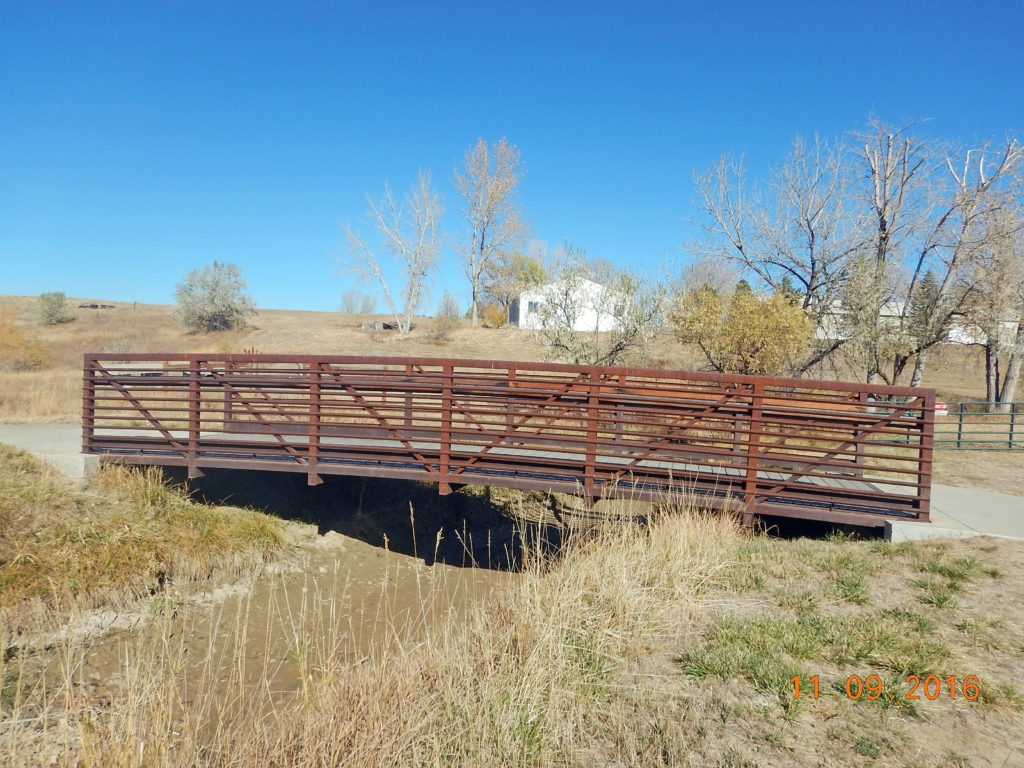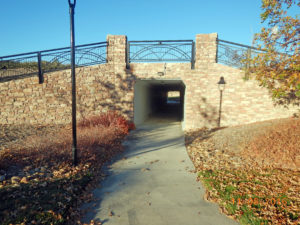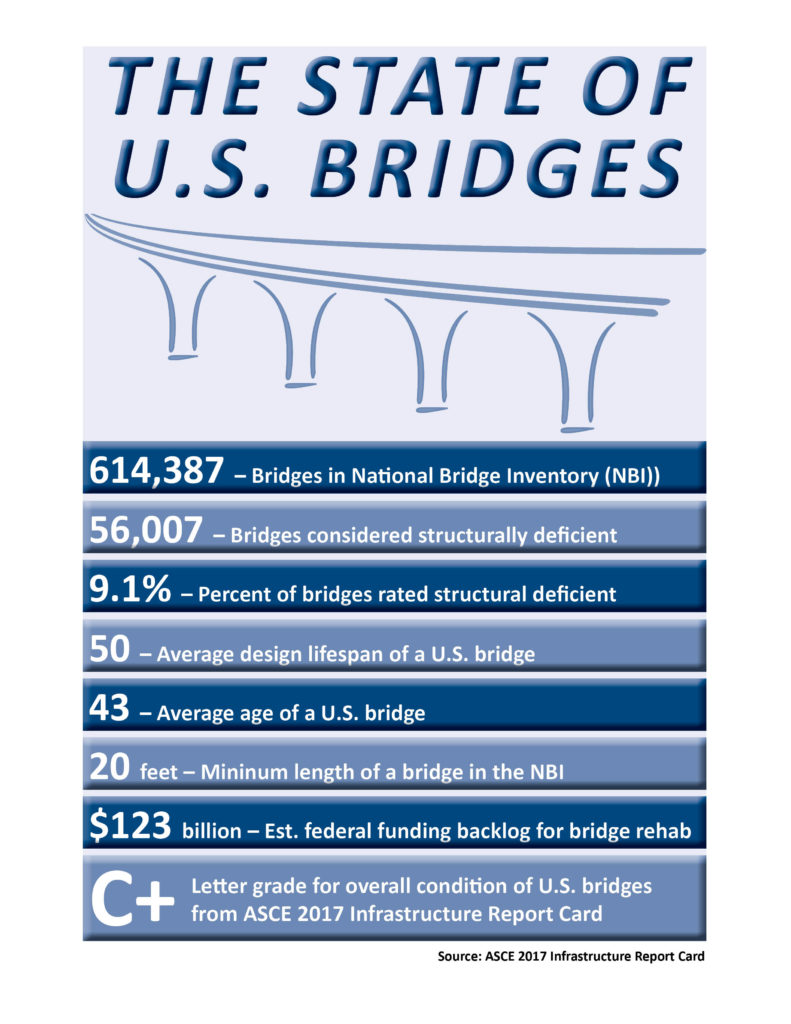Does My Bridge Need an Inspection?

The federal government oversees and tracks the inspection and condition of the nation’s more than 600,000 bridges and pays for much of the repair and replacement to keep them safe.
Did you know not all bridges require inspections? Here are answers to some frequently asked questions about bridge inspection.
What Is a Bridge?
The dictionary defines a bridge as “a structure carrying a pathway or roadway over a depression or obstacle (such as a river).” The federal government’s definition for what constitutes a bridge in its National Bridge Inventory (NBI) is much more detailed:
“A structure including supports erected over a depression or an obstruction, such as water, highway, or railway, and having a track or passageway for carrying traffic or other moving loads, and having an opening measured along the center of the roadway of more than 20 feet between under copings of abutments or spring lines of arches, or extreme ends of openings for multiple boxes; it may also include multiple pipes, where the clear distance between openings is less than half of the smaller contiguous opening.”
Why 20 Feet? What If My Bridge Is Shorter?
 That’s a good question. It’s one of several criteria included in the Federal-Aid Policy Guide, 23 CFR Part 650, Subpart C, also known as the National Bridge Inspection Standards (NBIS), a policy adopted years ago. In addition to defining which bridges need inspections, other criteria include proper procedures, inspection frequency, and qualifications of personnel to inspect bridges.
That’s a good question. It’s one of several criteria included in the Federal-Aid Policy Guide, 23 CFR Part 650, Subpart C, also known as the National Bridge Inspection Standards (NBIS), a policy adopted years ago. In addition to defining which bridges need inspections, other criteria include proper procedures, inspection frequency, and qualifications of personnel to inspect bridges.
Hundreds of bridges less than 20 feet could still swallow up a typical minivan or SUV, if those bridges are not structurally sound. These structures generally are referred to as “nonqualifying” bridges, meaning they don’t qualify for the NBI or any federal funding for upkeep.
Ayres Associates’ inspectors assess the integrity of NBI bridges and nonqualifiers alike, and it’s always good practice to have your structure inspected regularly. For example, Ayres has been inspecting smaller structures for the City and County of Broomfield, Colorado, such as pedestrian bridges, underpasses, and culverts that do not fall within NBI requirements. Ayres inspects between 67 and 136 structures for Broomfield every two years. Ayres inspectors also regularly assess miscellaneous structures like golf course bridges, waterslides, amusement park infrastructure, etc.
How Structurally Sound Are the Nation’s Bridges?
The Federal Highway Administration (FHWA) has 614,387 bridges in its current inventory. A recent report from the American Society of Civil Engineers gave overall bridge conditions a C+. The report showed that 56,007 bridges – or 9.1% – were structurally deficient in 2016. On average, 188 million trips were made over those structurally deficient bridges daily.

Should We Be Concerned?
To be clear, just because a bridge has been deemed structurally deficient does not mean it’s unsafe. But it does mean these structures require significant maintenance, rehabilitation, or replacement. Structurally deficient bridges must be inspected annually to ensure they remain safe for motorists. Another category is functionally obsolete, which means these structures do not meet current engineering standards; for example, they might have narrow lanes or low load-carrying capacities. On the positive side, the 9.1% of bridges deemed structurally deficient is down from 12.3% a decade ago, according to the 2017 Infrastructure Report Card.
The federal government took a stronger interest in the structural integrity of our bridges following the collapse of the I-35W Mississippi River bridge, which occurred 10 years ago this month in Minneapolis, as well as other structural failures throughout the country. With the average bridge in the United States sitting at 43 years old – most with an average design life span of 50 years – an increasing number of structures will need major work soon, the report says. Federal and state governments continually debate appropriate funding for these types of projects, which is estimated at $123 billion.
The conditions of nonqualifying bridges may be unknown. Because there is no federal law that directs inspection of these structures, some may have yet to be inspected. These nonqualifying bridges were constructed at some time in the past and left to perform without regular checkups.
How Can I Check the Condition of a Bridge Near Me?
Details about the conditions of all NBI bridges are kept in a database and are updated regularly. Just click here.
To check on bridges that are not part of the NBI, make direct inquiries to government agencies (federal, state, or local) or simply ask around to find out who owns the structure. If the condition of a nonqualifying bridge is unknown, an inspection of the bridge may be an inexpensive insurance policy to verify that it is performing as intended or that it needs maintenance, repair, or replacement.
Many government agencies are moving toward asset management and maintenance methods, which includes inventorying and monitoring all assets – big and small. Gaining knowledge about the infrastructure that is around us, regardless of structure size or laws, is prudent to keep the public safe.
Our structural inspection page describes the many types of inspections offered by Ayres Associates staff.

Post a comment: